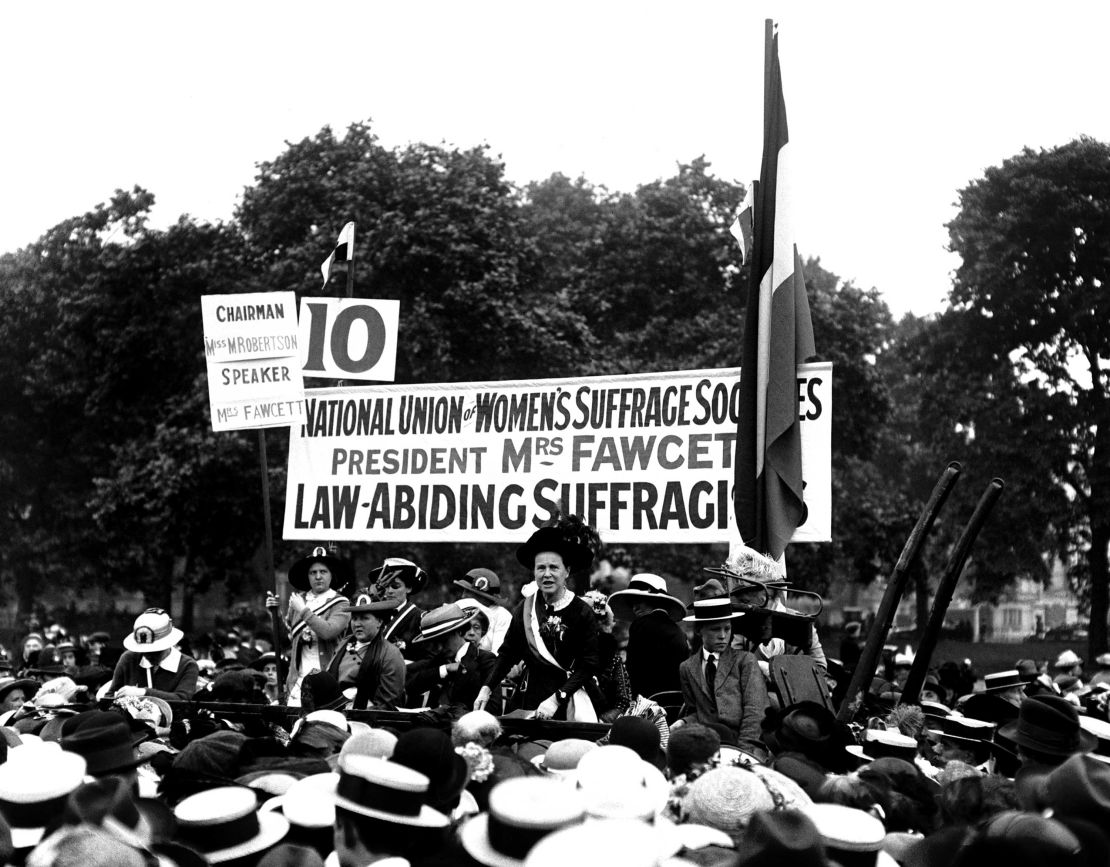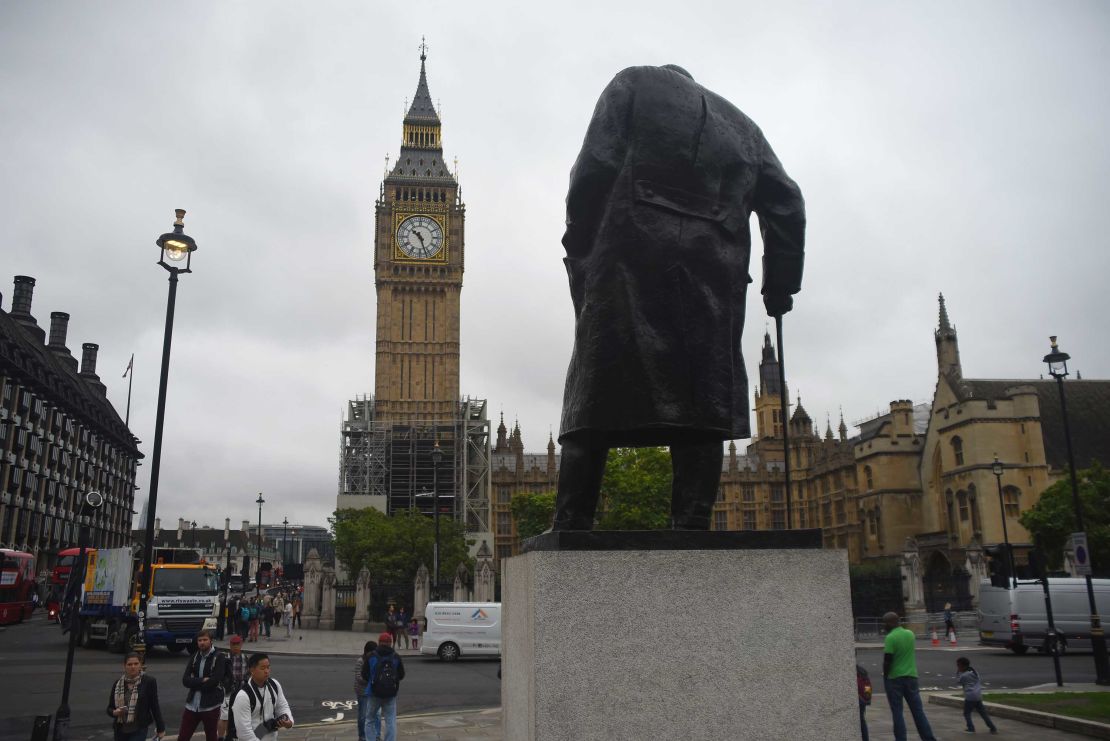Editor’s Note: Caroline Criado Perez is a writer, broadcaster and award-winning feminist activist. The opinions in this article belong to the author.
Just over two years ago, I took my dog, Poppy, for a run through London. It was March 8, 2016: International Women’s Day.
Like many feminists, I was having quite a busy day. I’d just finished speaking on one panel and had just enough time to exercise Poppy before the next.
Starting on the east end of the South Bank, we ran along the River Thames, crossing at Westminster Bridge. From there, we ran to Parliament Square – a public square outside the Houses of Parliament in London. I ran past the statue of Winston Churchill. Of David Lloyd George. Of some guy I’d never heard of called Jan Smutts.
As someone who is forever visiting Parliament to annoy one MP or another, I’d been through Parliament Square many times. I knew there were statues there. But somehow I’d missed one crucial detail: out of the 11 statues dotted around the iconic square, not a single one was of a woman.

I couldn’t believe it. “This is 2016!” I thought. “How is it that no one has sorted this out yet? Someone should sort it out.”
But not me. Definitely not me. It had been two years since the close of my campaign to get a female historical figure on Bank of England banknotes, but I hadn’t forgotten how a campaign takes over your life. I didn’t have the time, I thought.
I also hadn’t forgotten the price I’d had to pay for that campaign.
It was the day after the Bank of England announced that Jane Austen would feature on the next £10 note that I received my first rape threat. It would by no means be my last.
What followed on from that was three weeks where every single day, every hour, every minute, my Twitter mentions were filled with a stream of anonymous threats. Threats of gang rape. Of mutilation. Of being pistol-whipped and set on fire. Of being raped to death with a metal pole. Some threats included an address and phone number they’d dug up. One man tweeted about a gun he’d bought, wondering how much death it would buy him.

It is very easy for people who have never received such threats to tell you to just ignore them. These people don’t mean it, they say. They’re just trying to scare you.
Well, yes they were. And they succeeded. I had no idea who these threats were coming from. I had no idea where they were coming from. As one of the threats I received warned, it could be from someone I knew. I had no way of knowing if that was true.
All I knew was that it took only one person to mean it. I was scared to leave my home; the address they’d found was thankfully not my home address, but how long would it take them to find it? Clearly, they were looking.
And all because I had wanted what I had thought was a fairly mild request: for a woman to feature on the back of one of the four notes issued by the Bank of England.
So, no, I wasn’t keen to start another campaign. I sent a tweet expressing my outrage at the situation, in the vague hope that someone else might start it for me.
But as I carried on running through St. James’s Park, I couldn’t get those 11 statues of men out of my head. As I rounded Green Park, I realized I was composing the campaign text in my head. When I came back around to Buckingham Palace, I gave in to the inevitable: I sat on the ground, and set up a petition on my phone.

Two years and 85,000 signatures later, Parliament Square is on the brink of no longer being a male-only space. On Tuesday we will unveil not only the first statue of a woman in Parliament Square, but the first statue by a woman — Gillian Wearing.
The statue will be of Millicent Fawcett, who dedicated her whole life to fighting for women’s right to vote. In 1866 at the age of 19 she collected signatures for the first petition demanding female suffrage to be handed into Parliament. In 1928, she was up in the Ladies’ Gallery in the House of Lords watching the Equal Franchise Bill being passed. She died a year later in 1929. Until now, not a single statue of her has existed.
But while the statue itself is of Fawcett, it is not her alone whom we remember with this monument.
The fight for women’s right to vote, like all human rights battles, was won not by one person alone. It was a movement, made up of hundreds, thousands, millions, of ordinary people. People from all classes, all ethnicities. And so around the plinth will be the names and (where they exist) pictures of 59 women (and some men) who fought for this right, too.
And this makes the statue yet another first: It will be the first statue in Parliament Square to deviate from the Great Man version of history. The first statue to acknowledge that change doesn’t come from one man alone. The first statue to acknowledge that while movements may need leaders, those leaders are nothing without the people who fight alongside them.
As Millicent Fawcett herself said, “Courage calls to courage everywhere, and its voice shall not be denied.”
